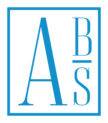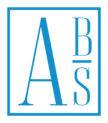Registered Retirement Savings Plans or RRSPs are a great investment vehicle for Canadians. A lot of taxpayers are unaware of the tax consequences of RRSP withdrawals before retirement.
If the taxpayer withdraws funds from their RRSP before retirement, the full withdrawal amount is included in the income in the year of withdrawal. The financial institution where the RRSP is held, withholds taxes from the withdrawal amount. The taxpayer is also subject to income tax at their marginal tax rate. Another drawback to withdrawing from your RRSP before retirement is that you permanently lose the contribution room.
Withholding Tax
What is the withholding tax? It is the tax that is withheld from the RRSP withdrawal amount. You can request either a gross or a net withdrawal. For example, if you request a gross withdrawal of $5,000 from your RRSP, your financial institution will deduct taxes to remit to CRA and you will receive the balance net of taxes and any fees. Whereas if you request a net withdrawal of $5,000, you will receive $5,000 but the actual withdrawal amount will be higher to include the withholding tax and any fees. Your financial institution will provide you with a T4A-RRSP which shows the amount of the withdrawal and the taxes withheld. However, the only exceptions to this rule are withdrawing under the Lifelong Learners Plan and Home Buyer’s Plan. Withholding taxes also do not apply if you are transferring your RRSP from one institution to another, as long as it remains in a RRSP.
Withholding tax rates
The following withholding tax rates apply to all provinces except Quebec:
| $1 to $5,000 | 10% |
| $5,001 to $15,000 | 20% |
| Over $15,001 | 30% |
For the province of Quebec, the following withholding tax rates apply:
| $1 to $5,000 | 5% |
| $5,001 to $15,000 | 10% |
| Over $15,001 | 15% |
If you withdraw smaller amounts multiple times in a year to try to avoid the higher withholding tax, your financial institution could still apply the withholding tax rate on the total amount if they notice the pattern.
Marginal Tax Rate
The marginal tax rate is your combined provincial and federal income tax rate that apply at the time you file your income tax return. The RRSP withdrawal amount is included in your income to calculate your income tax liability. Depending on the withdrawal amount, it can push you into a higher tax bracket. However, you can deduct the RRSP withholding tax from your total income tax liability.
Home Buyer’s Plan
Subject to certain criteria, CRA allows you to withdraw up to $25,000 tax-free to pay as down payment towards your first home purchase. The repayments start the second year after the withdrawal, and you have 15 years to pay back the funds. You will receive an annual statement from CRA showing the HBP balance owing, the payments made to date and the minimum payment amount.
Lifelong Learning Plan
You can also withdraw up to $10,000 tax-free per calendar year. The accumulated total cannot exceed $20,000 and you can withdrawal this amount over 4 years. You can use this to finance your or your spouse’s full-time education or training. You cannot fund your children’s education under this plan.
You have 10 years to repay the money under this plan, starting in the fifth year after your first withdrawal. You get a notice from CRA each year with the balance owing, payments made and the amount of your next payment. More details can be found on CRA’s website.
RRSP Withdrawals at Age 55 Plus
Once you turn 55 years old, you can convert your RRSP to an RRIF and start receiving payments. Note that you cannot reverse this. The downside to early conversion to RRIF is that you could potentially run of funds before you die.
RRSP Withdrawals at Age 71
You can contribute to an RRSP till the end of the calendar year you turn 71. At this point you must either withdraw the full amount of your RRSP or convert it into a RRIF. You are not allowed to own an RRSP past the December 31 of the calendar year you turn 71 years of age.
If you decide to withdraw the full amount of the RRSP, the financial institution will withhold taxes and you will receive the balance net of taxes and fees. The withdrawal of the RRSP in a lump sum could result in a large tax bill when you file your annual income tax return.
If you decide to convert your RRSP to a RRIF, CRA sets the minimum amount that must be withdrawn based on age. CRA assigns a factor corresponding to the taxpayer’s age. The minimum amount is calculated by multiplying this factor by the fair market value of the RRIF. The factors can be found on CRA’s website.
Spousal RRSP Withdrawals
You can contribute to your spouse’s RRSP but only your spouse can make withdrawals. If you contribute to your spouse’s RRSP in the year of withdrawal or the two preceding years, you are required to include the withdrawal amount in your income. This is the attribution rule.
The attribution rule ceases to apply when a spousal or common-law partnership breaks down, on death of a contributing taxpayer and also when either spouse becomes a non-resident of Canada. The attribution rule is in place to prevent the short-term use of spousal RRSPs for income-splitting purposes.
RRSPs are a valuable retirement savings tool because of its effectiveness in deferring taxable income. Understanding the different rules as they relate to RRSPs and RRIFs can allow Canadians to make the best use of these plans.






